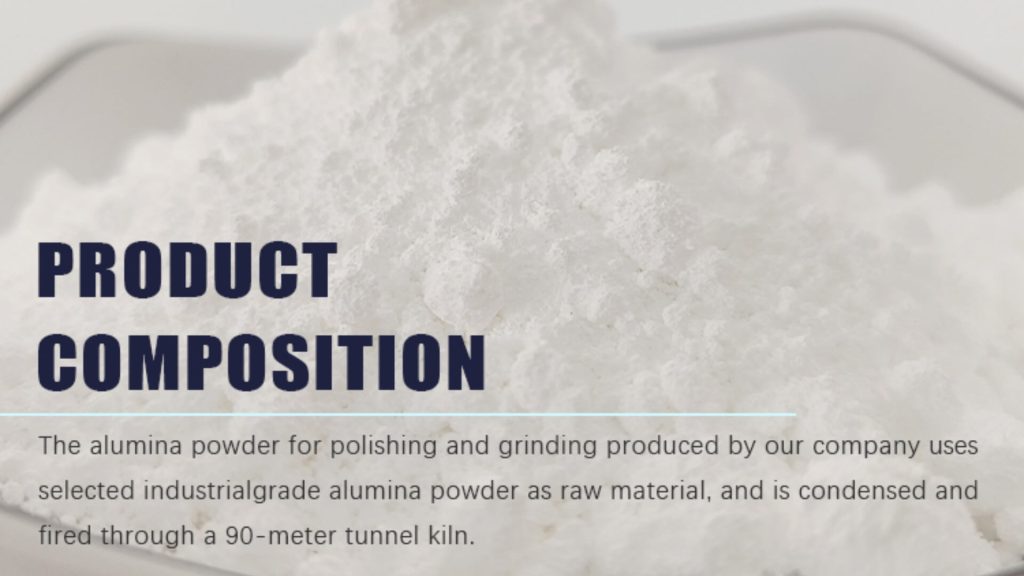The Diverse Uses of Alumina Powder: From Ceramics to Electronics
The unassuming little dust in front of you could soon transform into the ceramic backplate of your phone, a dental implant, or even a heat-resistant shield in a rocket engine. This magical substance is
alumina powder—the universal supporting actor of modern industry.
Ⅰ. The Iron Backbone of the Ceramic Industry
Step inside a ceramics factory and you’ll find
alumina powder quietly transforming the very fabric of traditional ceramics. When submicron-grade alumina powder is mixed into architectural ceramic blanks, miraculous changes occur: whiteness is significantly improved, and flexural strength jumps from approximately 70 MPa for ordinary ceramics to 96 MPa, a 30% increase. Simply put, the tiles are whiter and stronger.
In the field of specialty ceramics, 99.5% high-purity alumina powder is showing its true potential. Ceramics incorporating 10%
nano-α-Al₂O₃ powder achieve a flexural strength of 415 MPa after sintering at 1450°C—twice that of ordinary steel! This high strength makes it a preferred material for ceramic valves, grinding balls, and seals. In the high-temperature environments of steel mills, alumina ceramic seals have a lifespan over three times longer than metal counterparts, thanks to this “hard power.”
Even more impressively, new activated
alumina micropowders are revolutionizing refractory materials. Through a specialized grinding process that eliminates pores, their bulk density and compressive strength surpass those of similar international products, even requiring less water. This is like concrete being made stronger while using less water, naturally leading to a leap in castable performance.
 Ⅱ. The Invisible Hero of the Electronic World
Ⅱ. The Invisible Hero of the Electronic World
Your phone’s cooling system may be hiding a “doppelganger” of
alumina. In the electronics industry, 99.5% alumina powder is made into thermal interface materials (TIMs), silently safeguarding chip safety:
Thermal paste: Like “thermal toothpaste,” it fills the gap between the chip and the heat sink, improving thermal conductivity by 40%.
Ceramic substrate: Circuit board substrates made of 99.99% ultra-pure alumina provide both insulation and heat resistance.
Battery guardian: The
nano-alumina coating on lithium battery separators prevents shrinkage and fire at temperatures of 150°C.
Semiconductor manufacturing is even more dependent on it. Wafer polishing requires a surface roughness of less than 1 angstrom (equivalent to the diameter of an atom). Baikowski’s CR125
alumina polishing fluid from France uses 20nm-grade γ-phase alumina particles to achieve precision polishing, reducing scratch rates by 90%. A domestic chip manufacturer once scrapped an entire batch of wafers due to substandard polishing. After switching to a high-purity alumina polishing fluid, the yield rate increased by 15 percentage points.
In the LED industry, 4N-grade (99.99%) alumina powder is melted at 2000°C and grown into sapphire crystals, forming the foundation of light-emitting diodes. This substrate material increases LED luminous efficiency by 30% and extends its lifespan to 50,000 hours.
Ⅲ. The Diamond of Grinding and Polishing
The mirror-like luster of watch gears and the smooth feel of iPhone glass are all the work of alumina powder. As an abrasive with a Mohs hardness second only to diamond (9), its polishing effect can be described as “soft yet firm”:
Precision component polishing: CR30F
alumina powder with a 0.4μm particle size reduces metal surface roughness to the nanometer level.
Sapphire lens polishing: Wafer-grade alumina slurry eliminates microscopic scratches on mobile phone camera lenses.
Automotive polishing: Water-based alumina polishing fluid achieves a flawless gloss throughout the vehicle.
A renowned Swiss watch manufacturer was once troubled by low polishing yields for gear shafts – traditional polishing agents consistently resulted in 3% of parts exhibiting “orange peel” texture. Switching to α-alumina micropowder with a specific particle size distribution not only eliminated scratches, but also increased polishing efficiency by 20%, resulting in annual cost savings exceeding one million euros.
IV. “Transformers” in Cross-Border Applications
The wonders of alumina powder extend far beyond this:
Medical Implants: 5N-grade alumina ceramic hip joints boast seven times the wear resistance of titanium alloy and a service life of 20 years.
Transparent Armor: Bulletproof ceramics composited with high-purity alumina and spinel can block 7.62mm rifle rounds while being 60% lighter than steel.
Energy Saving Pioneer: Translucent alumina ceramics used in high-pressure sodium lamp tubes achieve 95% light transmittance, reducing streetlight power consumption by 40%.
Beauty Secret:
Nano-alumina as a cosmetic filler boosts sunscreen’s UV protection to 99%.
Last year, a major cosmetics brand launched an “exfoliating scrub” that sparked allergy complaints. Formulators replaced walnut shell powder with spherical alumina microparticles, which not only resolved the allergy issue but also doubled the exfoliating effect—thus transforming an industrial material into a beauty powerhouse.
From traditional ceramics to quantum chips, from architectural tiles to space station windows, the cross-disciplinary journey of alumina powder demonstrates that breakthroughs in materials science often begin with the simplest powder. When domestic companies raise the purity of alumina to four decimal places on Chinalco’s Shandong production line, and when engineers in Qinghai fine-tune the morphology of nanoparticles under an electron microscope, they are polishing more than just white powder; they are also creating the “industrial foundation” of China’s intelligent manufacturing.
After all, in this era, the true technological magic often lies in those seemingly ordinary powders.
